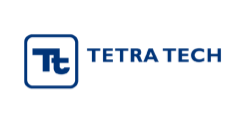Vapors in indoor air have long been a public health concern. Often, but not always, those vapors originate from an outside source, such as from the volatilization of chemicals in soil or groundwater that first migrate upwards into a basement or crawl space and then into the space above where residents may live (i.e., the dwelling space). Most of the early efforts to model indoor vapor intrusion focused on the radioactive gas radon, which has been a concern in the United States for decades. Shortly after models for radon transport through soils and into homes were developed, concern turned to subsurface chemical contamination and development of models to simulate subsurface migration.
Existing vapor intrusion models cannot simulate certain types of buildings, such as those with crawl spaces which comprise about 30% of all dwellings. To overcome that limitation, the Vapor Intrusion Model (ViM) was developed to simulate soil vapor intrusion into homes with crawl spaces, and has been subsequently expanded to include multiple story buildings. This web page describes the development and application of several vapor intrusion models, and discusses their similarities and differences. During the course of developing ViM, a number of new approaches to determining air exchange rates were developed, which are described on this web page as well.
In addition to developing models to enhance vapor intrusion exposure estimates, Tetra Tech has also established a reputation for effectively characterizing site-specific vapor intrusion risks for commercial/industrial and residential buildings potentially affected by volatile chemicals present in soil, soil gas, or groundwater and appropriately identifying when cost-effective mitigation/remediation measures should be implemented to prevent unacceptable vapor intrusion exposures. The ability to do this quickly and efficiently and to work effectively with regulatory agencies gives Tetra Tech the ability maximize the value of client properties. Examples of this work are included in the vapor intrusion portfolio.





